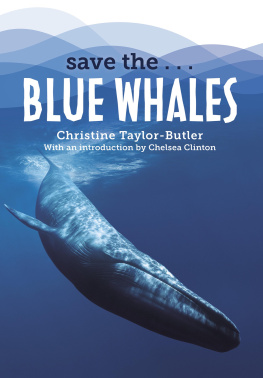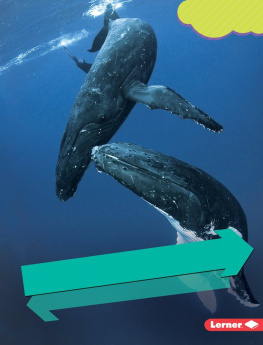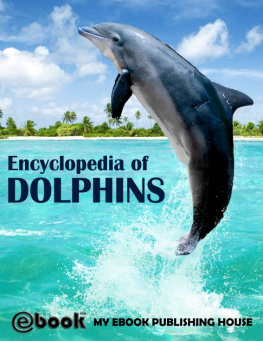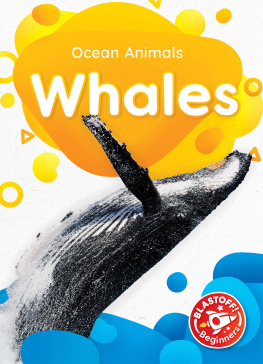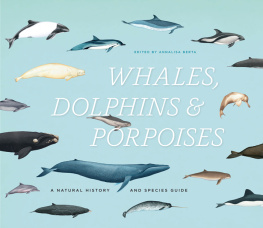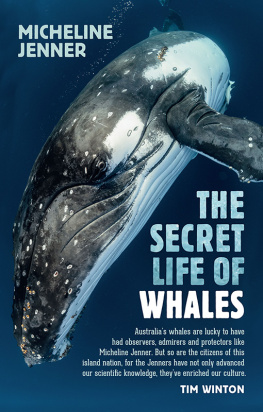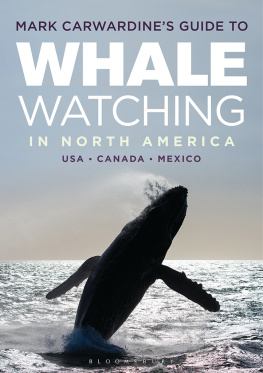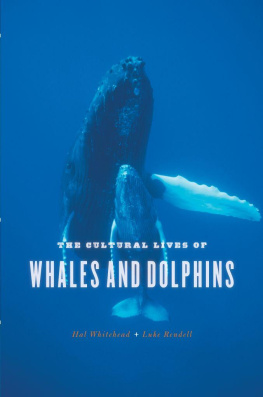Contents
INDEX
A
Anatomy,
Antarctic minke whale,
Arnouxs beaked whale,
B
Baiji,
Balaenopteridae,
Baleen,
Basilosaurus,
Beaked whales,
Beluga whale,
Blowholes,
Blue whale,
Boto,
Bottlenose dolphin, common,
Bottlenose whale,
Bowhead whale,
Brydes whale,
Burmeisters porpoise,
C
Climate change,
Conservation,
Cuviers beaked whale,
D
Delphinidae,
Dolphins
as category,
Dorudon,
Dwarf sperm whale,
E
Echolocation,
Endangered species,
Evolution,
F
Fin whale,
Flippers,
Flukes,
G
Gray whale,
H
Hectors dolphin,
Hubbs beaked whale,
Humans, relationship between cetaceans and,
Humpback whale,
Hunting behaviors,
I
International Whaling Commission (IWC),
J
K
Killer whale,
Krill,
L
M
Melon,
Migration,
Minke whale, common,
Mysticetes, . See also specific families and species
N
Narwhal,
North Atlantic right whale,
Northern right whale dolphin,
North Pacific right whale,
O
Ocean acidification,
Odontocetes, . See also specific families and species
Orca. See
P
Pilot whale,
Pink dolphin. See
Porpoises
as category,
Pygmy right whale,
Pygmy sperm whale,
R
Right whales,
Rissos dolphin,
Rorquals,
S
Sei whale,
Songs and sounds,
South Asian river dolphin,
Sperm whale,
Squid, giant,
T
Tucuxi,
U
V
Vaquita,
W
Whale shark,
Whaling,
Y
Yangtze river dolphin. See
Z
Ziphidae,
ABOUT THE AUTHOR
KELSEY OSEID is an author and illustrator based in the Midwest. Her work is a celebration of science, nature, and the ways humans relate to the natural world. She lives in Minneapolis with her husband, Nick Wojciak, two cats, and two chickens.
ACKNOWLEDGMENTS
Thank you to my editor, Kaitlin Ketchum, and designer, Betsy Stromberg, for their expert guidance and support in creating this book. I couldnt do this without them. Thank you also to Ten Speed Press production manager Jane Chinn, publicist Natalie Mulford, design fellow Christine Innes, and publisher Aaron Wehner. Many thanks to Maureen Flannery at the California Academy of Sciences. And thanks as always to my best bud Nick, my parents Jeff and Julie Oseid, and to Danny and Olivia.
SOURCES
BOOKS
Alexander, Becky, ed. Smithsonian Natural History: The Ultimate Visual Guide to Everything on Earth. New York: DK Publishing, 2010.
The Animal Book: A Visual Encyclopedia of Life on Earth. New York: DK Children, 2013.
Berta, Annalisa. Whales, Dolphins, & Porpoises: A Natural History and Species Guide. Chicago: University of Chicago Press, 2015.
Burnett, D. Graham. The Sounding of the Whale: Science and Cetaceans in the Twentieth Century. Chicago: The University of Chicago Press, 2012.
Carwardine, Mark, and Martin Camm. Whales, Dolphins and Porpoises. New York: DK Publishing, 2002.
Carwardine, Mark, R. Ewan Fordyce, Peter Gill, and Erich Hoyt. Whales, Dolphins, & Porpoises. San Francisco: Fog City Press, 1998.
Kolbert, Elizabeth. The Sixth Extinction: An Unnatural History. London: Bloomsbury, 2015.
Stewart, Brent S., Phillip J. Clapham, and James A. Powell. National Audubon Society Field Guide to Marine Mammals of the World. New York: A.A. Knopf, 2002.
DOCUMENTARIES
Beach Babies. Baby Animals in the Wild. National Geographic. 2015.
Blue Whale. Last Chance to See. BBC Two. 2009.
Cape. Africa. BBC Natural History Unit. 2013.
David Attenboroughs Natural Curiosities. BBC Worldwide. 2013.
Dolphins: Spy in the Pod. BBC One. 2014.
Humpback Whales. Directed by Greg MacGillivray. 2015.
Jane & Payne. Netflix. 2016.
Natures Great Events. BBC One. 2009.
Ocean Giants. Ocean Giants. BBC One. 2011.
WEBSITES
American Museum of Natural History. www.amnh.org.
California Academy of Sciences. www.calacademy.org.
The Field Museum. www.fieldmuseum.org.
National Geographic. www.nationalgeographic.com.
CONCLUSION
The last few hundred years have seen the devastation of many cetacean species, but the story doesnt end here. As weve become more aware of the challenges faced by cetaceans at the hands of humans, weve also learned more about how we can help them. Many species that were pushed to the brink of extinction during the commercial whaling boom have seen incredible recovery in their population numbers due to conservation efforts like whaling restrictions and habitat protection. Even as we are capable of destroying species forever, we can also protect them. The world is home to all of us, and if we can learn to remember our underwater cousins and honor their lives in the oceans and waterways of the world, we can allow cetaceans to live and thrive for generations to come.
HOW TO HELP WHALES
I hope that this book has inspired appreciation for our majestic cetacean relatives. If you want to make a difference for these species, here are a few things you can do.
STAY UPDATED
Follow Instagram accounts like those of wildlife photographers @paulnicklen and @joelsartore to stay updated on conservation news and bring intimate views of ocean wildlife into your daily routine.
MAKE INFORMED FOOD CHOICES
Conservation is tricky, and we are not always in a position to make it a priority. If you are fortunate enough to have the resources and time to examine and change your habits, food is a great place to start. If you eat seafood, find out where its coming from and try to choose more sustainable options. Ask questions at the stores and restaurants where you buy your food. The Monterey Bay Aquarium publishes a free seafood watch list that can help you identify the most ocean-friendly seafoodand what to avoidanywhere in the United States.
SPEAK OUT
Call or write your representatives to let your government know that conservation is important to you. Whether you live on a coastline near a protected marine area or far inland from any major body of water, your life and your community have an impact on the worlds oceans. Express your support for protection of wild spaces on land and in the sea.
DONATE
If you are able, consider making a financial contribution to conservation projects that work with endangered cetacean species, such as the World Wildlife Fund or Mission Blue. Or contribute to your local schools and science programs so more kids have the opportunity to learn about science, conservation, and natureand grow up to be a more responsible generation.
DON'T GIVE UP
Its easy to become jaded or feel defeated when it comes to environmentalism, but dont give up the fight. At this critical point in the history of humans and nature, its our time to do what we can to help those who cant help themselves.
CHAPTER SIX
HUMANS


